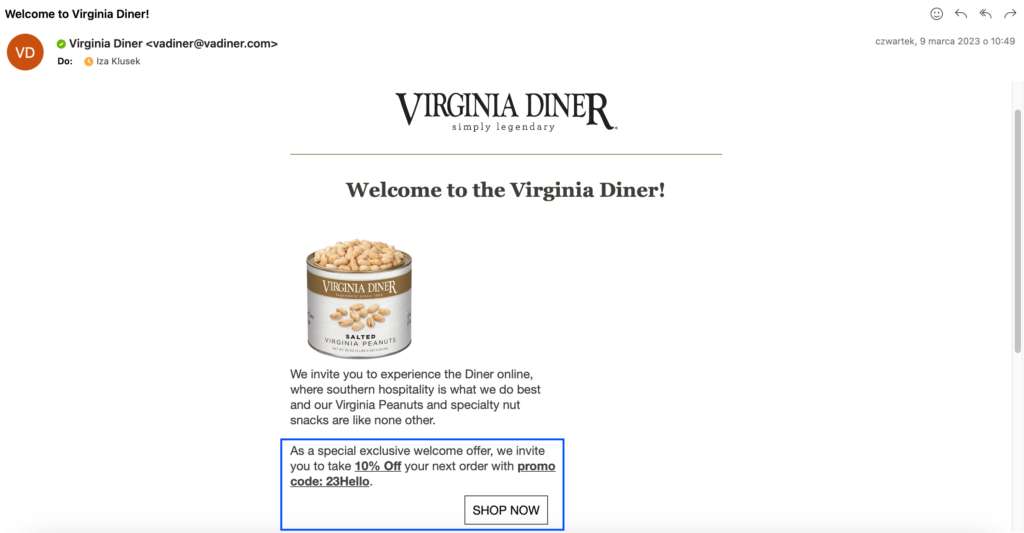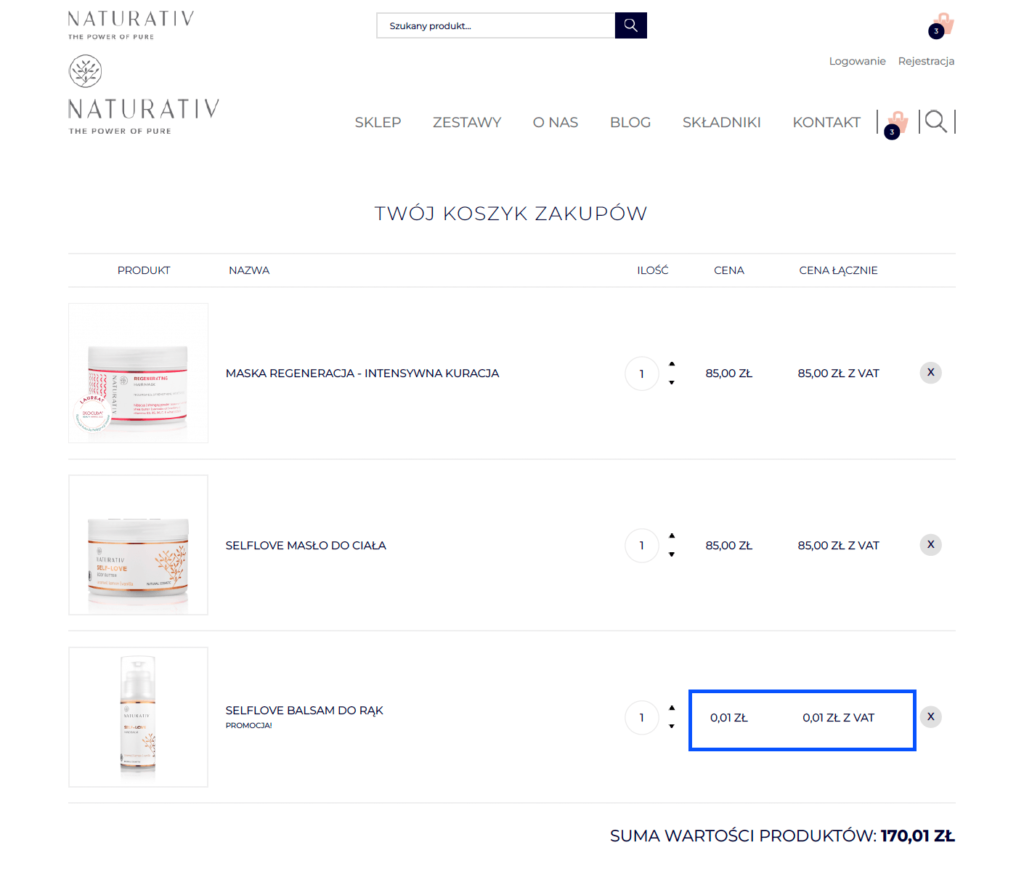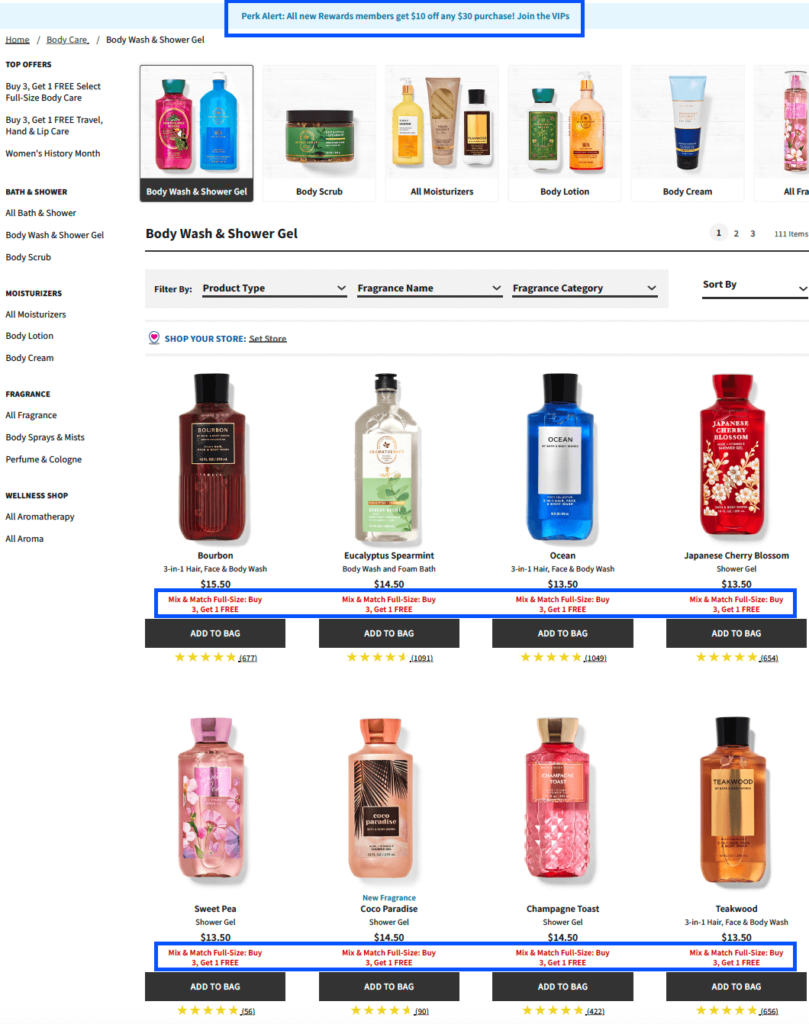The use of discounts as an incentive for e-commerce purchases is a common practice, and it would be hard to point to an e-commerce site where you won't find some kind of incentive in the form of discounts.
Of course, the most popular form is seasonal discounts. We often find them as a separate category in the navigation menu (SALE), on the listing, on the product maven or on the shopping cart, as well as in newsletters.
However, the ubiquity and availability of discounts may not always result in their effective use. That's why it's worth rethinking:
- which customers we want to reward with discounts
- what activities we want to reward customers for
- whether they always have to be the same types of discounts
In our article you will find helpful tips on how to plan your e-commerce discount policy.
1. Discount codes for first purchases
Offer users discounts for their first purchases on your e-commerce site. This will encourage them to test products and increase the chance of loyalty.
You can display information about the discount in multiple places in your e-commerce, such as a widget that will be clearly visible when browsing subsequent pages.

You can also send a discount coupon in the welcome email after the user registers, or simply inform the user what kind of discount they will receive on their first purchase.


2. Discounts for the second and subsequent product
There are several good ideas for offering discounts to customers who have only one product in their shopping cart. You can offer, for example, a second or subsequent product at a significantly reduced price (buy one, get one free promotions), this will induce the user to put more products in the cart, as well as to buy more expensive products:




Also mark the discount offer in the listing so that the user knows which products are covered by the buy one get one offer:
3. Discounts that depend on order value
Offer discounts that depend on the value of the order. This can be a percentage discount as well as free products, varying by order value.

4. Occasional discounts
Offer discounts on products that are seasonal or related to occasions such as Valentine's Day, Mother's Day or Christmas. Discounts can also include personalized promotional campaigns for birthdays.

5. Discounts on associated products
Offer discounts on products that are associated/complementary to products in the shopping cart. E.g., if a user has shoes in their shopping cart, offer them a protective bag for shoes or grooming accessories.

6. Loyalty programs
Offer loyalty programs, that reward customers for their purchases. Communicate benefits in the form of discounts to members of your loyalty program. You can show the benefits in the form of discounts in a prominent place on the homepage.

You can also label products in the listing with a special label showing the discount for program members.

7. Discounts for future purchases
Offer discounts on future purchases for customers who have made a purchase. For example, if a customer has made a purchase of £200, they will receive a discount code for 10% off future purchases.
8. Sharing discounts
Offer discounts to users who share your products or pages on social media. This will encourage them to share your store and increase the visibility of your products.
9. Discounts for newsletter subscriptions
Offer discounts to users who subscribe to your newsletter.
10. Discounts for leaving ratings and writing product reviews
It is a rare solution for users to be rewarded with shopping discounts in exchange for writing a review. Some e-commerce sites where reviews are important and realistically affect sales (such as baby products or cosmetics) use discounts to encourage users to leave reviews. Read more about the importance of reviews in the article #reviews and rankings
-1.png?width=290&name=png(1)-1.png)





.jpg?width=300&name=Frame%204728%20(1).jpg)
